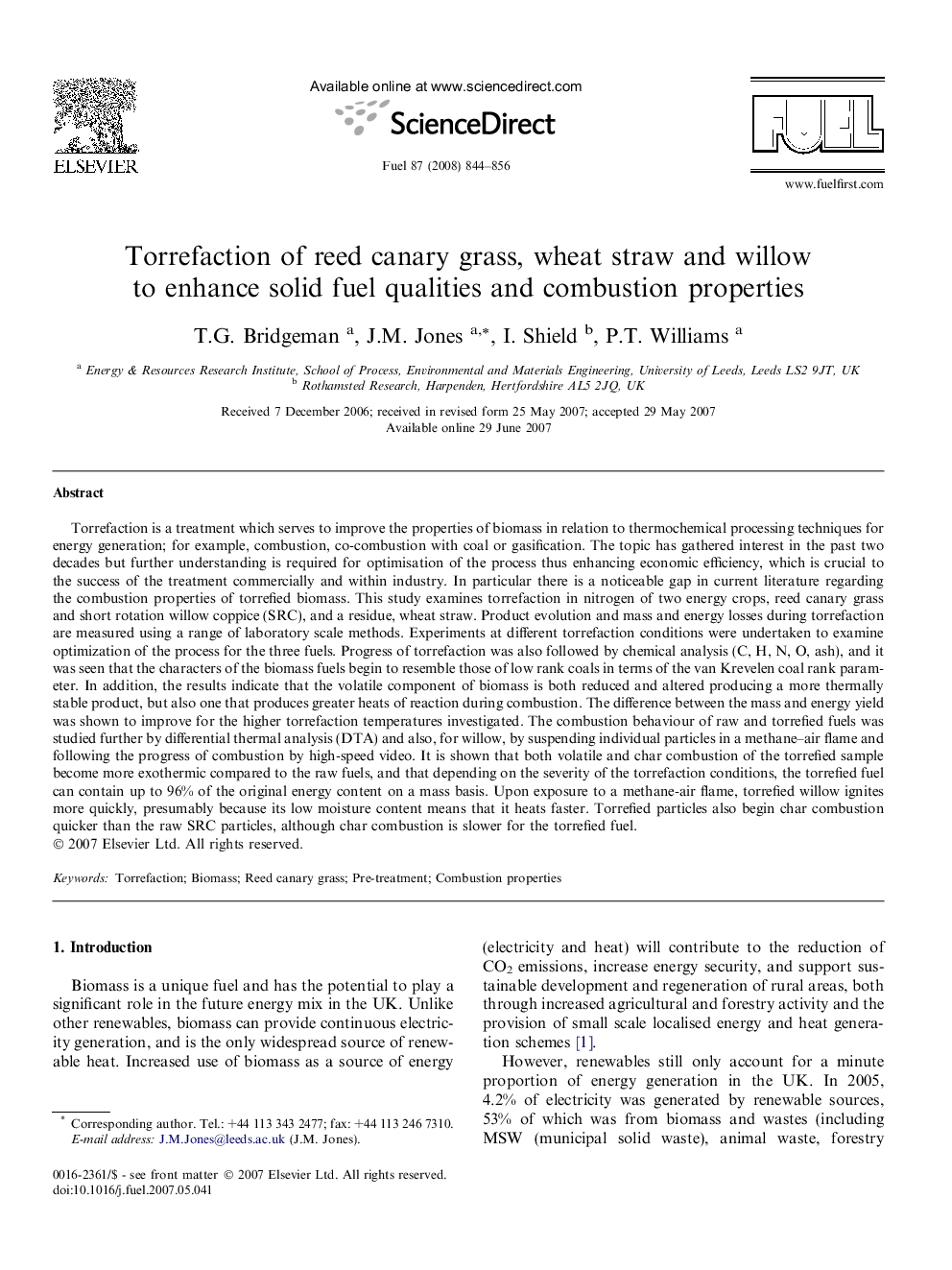| کد مقاله | کد نشریه | سال انتشار | مقاله انگلیسی | نسخه تمام متن |
|---|---|---|---|---|
| 207762 | 461225 | 2008 | 13 صفحه PDF | دانلود رایگان |

Torrefaction is a treatment which serves to improve the properties of biomass in relation to thermochemical processing techniques for energy generation; for example, combustion, co-combustion with coal or gasification. The topic has gathered interest in the past two decades but further understanding is required for optimisation of the process thus enhancing economic efficiency, which is crucial to the success of the treatment commercially and within industry. In particular there is a noticeable gap in current literature regarding the combustion properties of torrefied biomass. This study examines torrefaction in nitrogen of two energy crops, reed canary grass and short rotation willow coppice (SRC), and a residue, wheat straw. Product evolution and mass and energy losses during torrefaction are measured using a range of laboratory scale methods. Experiments at different torrefaction conditions were undertaken to examine optimization of the process for the three fuels. Progress of torrefaction was also followed by chemical analysis (C, H, N, O, ash), and it was seen that the characters of the biomass fuels begin to resemble those of low rank coals in terms of the van Krevelen coal rank parameter. In addition, the results indicate that the volatile component of biomass is both reduced and altered producing a more thermally stable product, but also one that produces greater heats of reaction during combustion. The difference between the mass and energy yield was shown to improve for the higher torrefaction temperatures investigated. The combustion behaviour of raw and torrefied fuels was studied further by differential thermal analysis (DTA) and also, for willow, by suspending individual particles in a methane–air flame and following the progress of combustion by high-speed video. It is shown that both volatile and char combustion of the torrefied sample become more exothermic compared to the raw fuels, and that depending on the severity of the torrefaction conditions, the torrefied fuel can contain up to 96% of the original energy content on a mass basis. Upon exposure to a methane-air flame, torrefied willow ignites more quickly, presumably because its low moisture content means that it heats faster. Torrefied particles also begin char combustion quicker than the raw SRC particles, although char combustion is slower for the torrefied fuel.
Journal: Fuel - Volume 87, Issue 6, May 2008, Pages 844–856